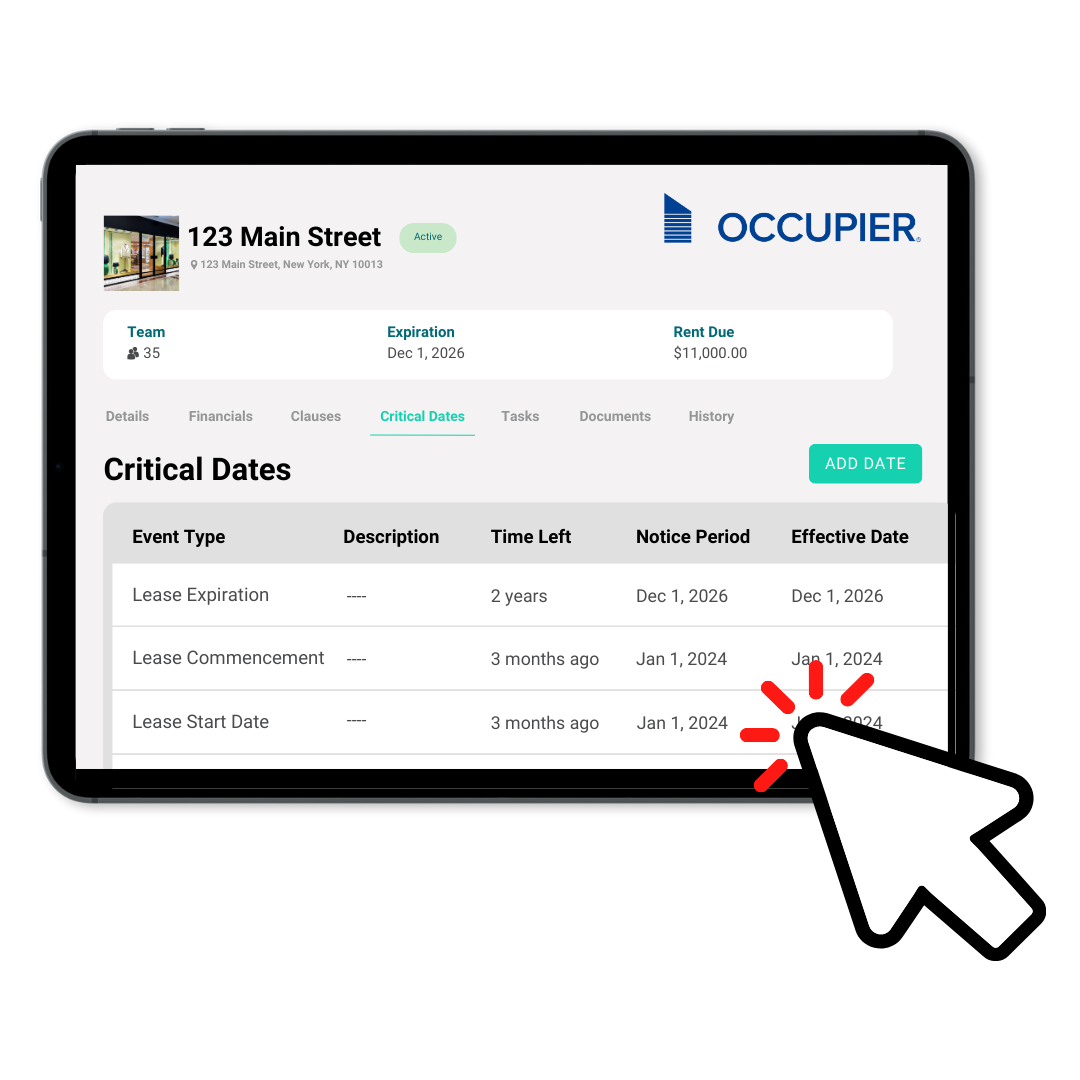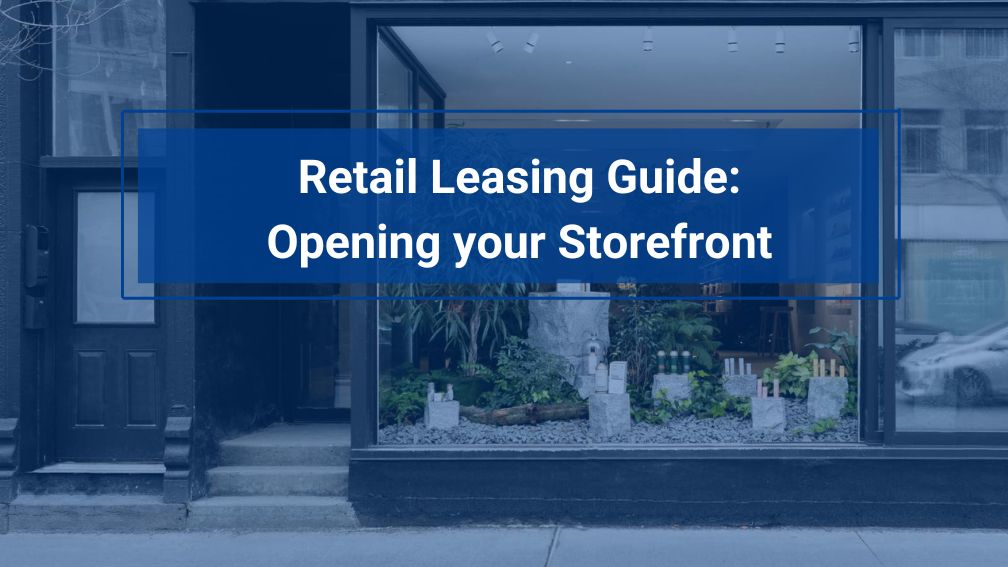Retail Leasing Guide: Opening your Storefront
Last Updated on April 25, 2024 by Morgan Beard
Opening a physical retail store is a thrilling yet challenging endeavor. While a well-placed storefront can significantly elevate your business, navigating the intricate landscape of retail leasing can feel like a daunting task. According to ICSC, they have dubbed 2024 the year of store, stating that “tenants are competing to fill vacated spaces and industry data continues to prove the power of in-person experiences.”
Our retail leasing guide is here to illuminate the path to opening your storefront. From understanding the leasing process to strategically selecting the perfect location and negotiating lease terms that align with your business objectives, we’ve got you covered every step of the way.
Understanding the Retail Leasing Process
Before diving headfirst into the world of retail leasing, it’s crucial to grasp the intricacies of the leasing process. From scouting potential locations to signing on the dotted line, each stage demands careful attention and strategic planning. Our guide will walk you through each phase, demystifying the process and empowering you to make informed decisions at every turn.
1. Determine Your Needs
Before you embark on your quest for the perfect retail space, take a step back and assess your needs thoroughly. Understanding your business’s unique requirements is essential for guiding your search and ensuring that the space you ultimately choose aligns seamlessly with your goals and objectives.
- What type of products will you be selling?
- What is your target market and ideal shopper?
- What co-tenants make sense to position your business near?
- How much space do you require to showcase your merchandise?
2. Research Available Spaces
With a clear understanding of your needs in hand, it’s time to start researching available spaces in your desired location. This is a great time to employ a tenant-rep broker who specializes in retail properties. They can support your site selection search and provide valuable support in lease negotiations and retail location lease hunting. Explore a variety of options to gain a comprehensive view of the market landscape.
3. Visit and Evaluate Potential Spaces
Armed with a list of prospective retail spaces, it’s time to hit the pavement and start visiting each location in person. While online listings can provide valuable insights, nothing beats experiencing a space firsthand. Pay close attention to factors such as foot traffic, visibility, layout, and overall ambiance. Imagine how your store would fit within each space and consider how each location aligns with your brand identity and target demographic. Take notes, ask questions, and trust your instincts as you evaluate each potential space with a critical eye.
Strategies for Choosing the Ideal Retail Location
Location, as they say, is everything in retail. Selecting the perfect storefront can make all the difference in the success of your venture. But with countless factors to consider – foot traffic, demographics, competition, and more – how do you ensure you’re making the right choice? Our guide will equip you with proven strategies for evaluating potential locations, helping you pinpoint the ideal spot to plant your retail roots.
Tips for Negotiating a Retail Lease
Negotiating a lease is an art form unto itself, requiring finesse, strategy, and a keen understanding of your business’s needs. Whether it’s securing favorable terms on rent, navigating common pitfalls, or safeguarding your interests for the long haul, our guide offers invaluable tips to ensure you emerge from negotiations with a lease that sets the stage for success.
1. Considerations When Negotiating Lease Terms
Once you have identified the ideal space, it’s time to negotiate the lease terms. Here are some key considerations during the negotiation process:
- Rent: Negotiate the base rent amount and any additional charges, such as common area maintenance fees (CAM Fees) and utilities. Aim for a reasonable rental rate that fits within your budget.
- Lease Duration: Discuss the lease duration with the landlord. Negotiate a term that aligns with your business goals, allowing for potential growth or relocation in the future.
- Tenant Improvements: If any modifications or improvements are required to make the space suitable for your business, discuss the option for a tenant improvement allowance.
- Security Deposit: Clarify the amount of the security deposit required and any conditions for its return at the end of the lease term.
2. Review and Execute the Lease Agreement
Once you’ve reached an agreement with the landlord on lease terms, it’s crucial to review the lease agreement meticulously before signing on the dotted line. While it may be tempting to rush through this step in your eagerness to secure the space, taking the time to carefully scrutinize the lease can save you from potential headaches down the road. We always recommend partnering with a real estate lawyer to formally review and advise you on the lease agreement.
Pay close attention to clauses related to rent escalation, maintenance responsibilities, subleasing options, lease termination clauses and any restrictions or limitations imposed by the landlord. Legal counsel partnership will help you fully understand the terms of the lease and that your interests are adequately protected. Once you’re satisfied with the terms, proceed to execute the lease agreement, making it official and binding for both parties involved.
3. Ongoing Lease Management Tasks
Securing a lease agreement is just the beginning of your journey as a retail tenant. To ensure a smooth and successful leasing experience, it’s essential to stay proactive and engaged in ongoing lease management tasks throughout the duration of your tenancy. This includes:
- Rent Payments: Timely payment of rent is crucial to maintaining a positive relationship with your landlord and avoiding penalties or legal issues. Establish a system for tracking rent due dates and set reminders to ensure prompt payment each month.
- Maintenance and Repairs: Fulfill your obligations regarding maintenance and repairs as outlined in the lease agreement. Promptly report any maintenance issues to the landlord or property manager and work together to address them in a timely manner.
- Communication with Landlord: Maintain open lines of communication with your landlord or property manager. Address any concerns or issues promptly and professionally, and strive to cultivate a mutually beneficial relationship throughout the duration of your lease.
- Task Management: Implement a task management system to track lease-related responsibilities. Assign tasks to relevant team members and set deadlines for completion.
- Lease Accounting: Your accounting team will need to ensure compliance with accounting standards and regulations governing lease accounting.
- Lease Renewal and Expansion: As your lease term approaches expiration, evaluate your options for renewal or expansion. Consider factors such as market conditions, business growth projections, and any changes in your space requirements. Initiate discussions with the landlord in advance to negotiate favorable terms for lease renewal or expansion, ensuring continuity and stability for your retail business.
Retail Leasing Terminology
Before diving into the world of retail leasing, it’s essential for commercial real estate tenants to familiarize themselves with key terminology commonly used in lease agreements. Understanding these terms will empower tenants to negotiate effectively, make informed decisions, and navigate the leasing process with confidence. Here are some critical retail leasing terms every tenant should know:
Retail Rent Expenses
- Base Rent: The fixed amount of rent paid by the tenant to the landlord, usually on a monthly basis, excluding additional expenses such as utilities and maintenance fees.
- Rent Abatement: A temporary suspension or reduction of rent payments, usually granted by the landlord in the event of property damage or other circumstances that render the leased space unusable.
- Common Area Maintenance (CAM) Fees: Charges paid by tenants to cover the cost of maintaining common areas of the property, such as parking lots, hallways, and landscaping.
- Rent Escalation: The provision in a lease agreement that allows for periodic increases in the amount of rent paid by the tenant over the lease term.
- Security Deposit: A sum of money paid by the tenant to the landlord as security against damages to the property or default on lease obligations.
- Personal Guarantee: A legal commitment made by an individual, typically the business owner or a principal of the company, to personally assume responsibility for fulfilling the obligations of a lease.
Common Lease Types
- Triple Net Lease (NNN): A lease agreement where the tenant is responsible for paying all operating expenses associated with the property, including property taxes, insurance, and maintenance costs, in addition to base rent.
- Gross Lease: A lease agreement where the landlord assumes responsibility for paying all operating expenses associated with the property, and the tenant pays a fixed amount of rent.
- Percentage Rent Lease: In addition to a base rent, the tenant agrees to pay the landlord a percentage of their gross sales above a certain threshold.
- Sublease: A lease agreement between the original tenant (sublessor) and a new tenant (sublessee) for all or part of the leased space.
- Renewal Option: A provision in the lease agreement that grants the tenant the right to extend the lease for an additional term upon expiration.
Commercial Lease Clauses & Critical Dates
- Lease Term: The duration of time for which the lease agreement is valid, typically expressed in months or years.
- Lease Commencement Date: The date in which the lease term begins and the tenant takes possession of the leased property.
- Lease Expiration Date: The last day of the lease term, subject to any other date on which the lease is terminated.
- Early termination clause: Allows the tenant or landlord to end the commercial lease agreement prior to the lease expiration date.
- Landlord delivery requirements: The landlord must deliver actual possession of the property to the tenant.
- Tenant Improvements (TI): Modifications or improvements made to the leased space to meet the specific needs of the tenant’s business.
- Tenant Allowance: A sum of money given to the tenant from the landlord in order to fund for the cost of improvements to the space.
- Leasehold Improvements: Alterations or improvements made to the leased space by the tenant, typically at the tenant’s expense and with the landlord’s consent.
- Holdover Period: The period of time after the expiration of the lease term during which the tenant remains in possession of the leased space without a new lease agreement.
- Exclusive-Use Clause: A provision in the lease agreement that grants the tenant exclusive rights to conduct a specific type of business or offer certain products or services within the property, thereby prohibiting the landlord from leasing space to competitors.
- Assignment: The transfer of the tenant’s lease obligations and rights to another party, known as the assignee.
- Co-tenancy: Allows tenants to reduce their rent if anchor tenants or a particular number of tenants leave the retail development space.
- Permitted use: Refers to the activity type that a tenant is allowed to engage in within the leased space.
Retail Leasing Guide Conclusion
Opening a physical retail store is a significant milestone for any business — whether you are opening your 1st or 300th location — navigating the leasing process can be a daunting task. However, armed with the insights and strategies outlined in our retail leasing guide, you’ll be well-equipped to tackle the challenges head-on and embark on this exciting journey with confidence. So, roll up your sleeves, sharpen your negotiation skills, and get ready to unlock the potential of your storefront like never before.

Product Tour
Take a self-guided tour and see how the fastest-growing commercial tenants leverage Occupier for lease management & lease accounting.
